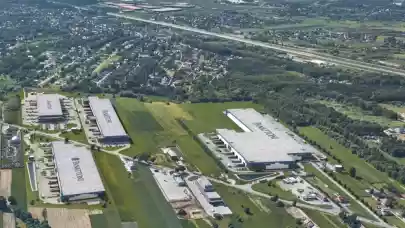
Steffen Szeidl, CEO of Drees & Sommer, spoke with Property Forum at Expo Real about the challenges of property development and the potential for business growth in Europe. He cites the electrification of the economy and the upgrade of the existing stock of buildings as new growth avenues for Europe.
What is the market sentiment you are getting from all your meetings at Expo Real?
The impression I had in all the different talks is that the whole real estate sector has more realistic views at the moment compared to last year when everyone was saying “We do not have any problems.” and “We are perfectly financed.” Actually, we see a lot of companies that are running towards bankruptcy, even on the development scene. I believe that the hardest job at the moment is to be a developer. You need to secure refinancing for your existing projects at a higher cost than before and at the same time, you might struggle to find an end-user or a buyer, especially at the price you imagined earlier.
What are the key differences you are seeing between the different markets in which you are present?
There are a lot of active governments around the world that actively encourage domestic investments. For instance, in the US, there is the Inflation Reduction Act and they try to get investments from Europe in the US market. We feel that very strongly in the automotive sector, but also for data centres, semiconductors and others. We have seen so far projects where our clients do not need a business plan due to financing by the state in the US. Data centres and semiconductors are the key industries for the next 10 years and it is absolutely necessary to have them in Europe as well.
Coming to China, the real estate market is down. Looking back over the last years, 38% of the growth in China was driven by the real estate sector. Now if you follow stories like Evergrande’s and others, you’ll see that investment in real estate in China is risky. Therefore, even our existing global clients in the industrial sector are very conservative in China.
Coming back to Europe, we have a lot of buildings from the '70s and '80s such as hospitality projects, kindergartens or schools which will attract investment over the upcoming years (in refurbishment).
In Germany, there are a lot of uncertainties around regulations which is what drives the market. I know even international investors are waiting due to the fact that in Berlin and some other cities there is a cap on rents. Because of the cap on the rents, you are not able to generate an income which is needed, for example, for refurbishments. This is actually one of the major topics for international investors.
Still, I do not believe that we will see a very long period when prices come down. I believe that it will take more or less two years, but then we are through. They will not come down because there is still a very high demand and a gap in houses or apartments needed. In Germany alone, 700,000 new apartments are needed and we are not able to build them at the moment.
Steffen Szeidl
Member of the Executive Board
Drees & Sommer SE
What are the opportunities you are seeing for Drees & Sommer in Europe?
We still have our priorities in Europe. There will be further growth in this region, just thinking about all the energy investments coming up. Everything will switch to an “all electric society”, cars will run on electricity, homes and heating systems will run on electricity, etc. This means that huge investments are needed considering the old infrastructure across the continent. This is where we see a large potential in the upcoming years.
There is increasing pressure both from the market and on the regulatory side on investors and developers to be ESG compliant. How do you see that affecting the market and what kind of opportunities does it bring you?
For more than 40 years, we at Drees & Sommer have been focusing on sustainability. If you start a new building, or even if you start a refurbishment, for everyone, it is clear, you need a structural concept, a design concept. But for us, it is key to have a sustainability concept as well. If that is missing, there could be no direction into ESG. Even if it comes to an existing building, you have to bring together the economic and the ecological point of view.
At the moment, there are not high amounts of financing provided by states for creating efficient buildings. What we see actually is not total refurbishments to bring buildings up to a very high standard but rather buildings gradually becoming ESG compliant over 5-10 years. The way to ESG is to be open and we have to stay that way in the upcoming years.
What you are deciding at the moment will be on the market in three years and has to stay on the market for the next 50 years or even longer, so there is no other solution. I believe the sooner you start doing the work on ESG compliance, it will also help the company. Quality is needed in the product as well as in the process, so ESG is key. Furthermore, to reach the ESG targets, digitisation is key, because without data, maybe you can put up a sustainable building, but you need to have a sustainable operation phase as well, for which proper data is needed.
Can you highlight one technology in construction that you are excited about right now?
Yes, I am impressed with the current development in robotics and automatisation, prefabrication, modularisation and assembling instead of construction. For example, robots that are able to install the whole electricity network of a 12-metre wall within a few minutes. The goal for the future should be to use that kind of standardisation while still producing unique sustainable buildings.



